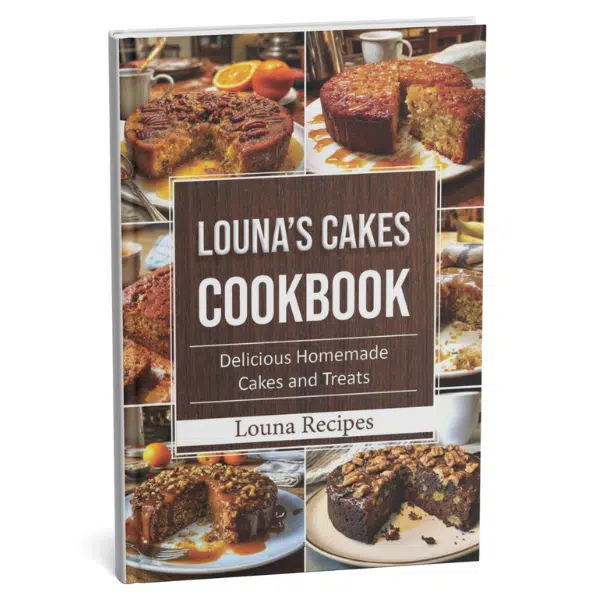Danish pastries are a beloved treat around the world, known for their flaky, buttery layers and sweet fillings. Originating from Denmark, these pastries are a popular choice for breakfast or dessert and are often enjoyed alongside a cup of coffee or tea. The beauty of this recipe lies in its shortcut dough, which allows you to create delicious Danish pastries without spending hours in the kitchen. This homemade dough is simpler to prepare than traditional puff pastry and yields amazing results.
With a rich, buttery flavor and delightful crunch, these pastries can be filled with a variety of fillings, from fruity jams and fruit preserves to sweet cheese or chocolate. You can enjoy them fresh out of the oven or drizzled with icing for an extra sweet touch. They make for an impressive dessert or a delightful morning snack, perfect for sharing with family and friends.
Let’s dive into the details of making these mouthwatering Danish pastries with shortcut homemade dough.
Ingredients about Danish Pastries with Shortcut Homemade Dough
List of ingredients with measurements
- 1/4 cup warm water
- 2 and 1/4 teaspoons Platinum Yeast
- 1/4 cup granulated sugar
- 1/2 cup whole milk
- 1 large egg
- 1 teaspoon salt
- 14 tablespoons unsalted butter
- 2 and 1/2 cups all-purpose flour
- 2/3 cup filling of choice (jam, fruit preserves, etc.)
- 1 large egg (for egg wash)
- 2 tablespoons milk (for egg wash)
- 1 cup confectioners sugar (optional, for icing)
- 2 tablespoons milk or heavy cream (optional, for icing)
- 1 teaspoon pure vanilla extract (optional, for icing)
Optional ingredient substitutions
- You can replace whole milk with any milk alternative, like almond milk or oat milk, for a dairy-free option.
- If you need a gluten-free version, use a gluten-free all-purpose flour blend.
- For the filling, feel free to try cream cheese, Nutella, or even fresh fruits like apples for a unique twist.
How to Make Danish Pastries with Shortcut Homemade Dough

Step 1: Make the Pastry Dough
Begin by whisking together the warm water, yeast, and 1 tablespoon of granulated sugar in a large bowl. Cover the bowl with a clean kitchen towel or plastic wrap and let it rest for about 5 minutes. This allows the yeast to activate, causing it to become foamy. Once foamy, whisk in the remaining sugar, whole milk, one large egg, and salt until it is well mixed. Lightly cover the bowl again and set it aside while you prepare the butter and flour mixture.
Step 2: Prepare the Dough
Take the cold unsalted butter and cut it into 1/4-inch slices. Place the butter slices into a food processor along with the all-purpose flour. Pulse the mixture 12 to 15 times until the butter is evenly crumbled throughout the flour. This step creates those desirable flaky layers in your Danish pastries. Now, pour the crumbled butter and flour mixture into the wet yeast mixture. Use a spatula or your hands to fold the ingredients together until everything is moistened. Wrap the dough in plastic wrap and place it in the refrigerator for at least 4 hours, though you can leave it for up to 48 hours for enhanced flavor.
Step 3: Roll & Fold the Dough
Once the dough has chilled, remove it from the refrigerator and transfer it onto a lightly floured surface. Roll out the dough into a rectangle measuring approximately 15×8 inches. Folding is a critical step in creating the classic flaky texture. To do this, fold the dough into thirds, similar to folding a letter. After the first fold, turn the dough clockwise a quarter turn to keep the folds in the right direction. Roll it out again and repeat the folding process. After completing the folds, chill the dough again in the refrigerator for at least 1 hour or up to 24 hours if you desire.
Step 4: Shape and Fill the Pastries
Once the dough is completely chilled, divide it in half. Allow one half to stay in the fridge while you work with the other half. Shape the first half into 8 equal balls. Flatten each ball into a smooth circle, about 2.5 inches in diameter. Create a lip around the edges by gently pushing the dough while leaving the center slightly raised. This creates a small well to contain your chosen filling. Spoon approximately one tablespoon of your desired filling into the center of each pastry.
Step 5: Egg Wash
In a small bowl, whisk together the egg wash ingredients: one large egg and 2 tablespoons of milk. Use a pastry brush to apply the egg wash around the edges of each pastry. This will give your pastries a beautiful golden color as they bake. After applying the egg wash, chill the pastries in the refrigerator for at least 15 minutes. This helps maintain their shape while baking.
Step 6: Bake
Preheat your oven to 400°F (200°C). Once heated, remove the pastries from the fridge and place them on a parchment-lined baking sheet. Bake them in the preheated oven for about 19 to 22 minutes or until they become puffed and golden. Keep an eye on them the last few minutes to avoid over-baking.
Step 7: Make the Icing (if using)
While the pastries are cooling, you can prepare the optional icing. In a bowl, whisk together the confectioners’ sugar, 2 tablespoons of milk or heavy cream, and 1 teaspoon of pure vanilla extract until the mixture is smooth and creamy. Drizzle the icing over the warm pastries for an enticing finish.
How to Serve Danish Pastries with Shortcut Homemade Dough
Best ways to serve Danish Pastries with Shortcut Homemade Dough
Danish pastries shine brightly as both a breakfast option and a delightful dessert. You can serve them warm or allow them to cool to room temperature. They are perfect just as they are, or you can add a sprinkle of powdered sugar over the top for a finishing touch. For an extra indulgent twist, serve them with a dollop of whipped cream or a scoop of vanilla ice cream.
Serving suggestions or pairings
Pair your Danish pastries with a hot cup of coffee or a fragrant cup of tea. The rich flavors of coffee complement the buttery pastries beautifully, while tea can provide a refreshing counterpart. For a brunch gathering, consider serving with fresh fruit salad or yogurt to create a well-rounded meal.
How to Store Danish Pastries with Shortcut Homemade Dough
Proper storage methods
If you have leftover Danish pastries (which is seldom, given how delicious they are!), you can store them in an airtight container at room temperature for up to 2 days. If you need to keep them for longer, consider freezing them.
Tips for reheating or freezing
To freeze your Danish pastries, place them in a single layer on a baking sheet to keep them from sticking together. Once frozen, transfer them to a freezer-safe bag or container. They can be stored in the freezer for up to 2 months. To reheat, simply thaw them at room temperature, then warm them in a preheated oven at 350°F (175°C) for about 10 minutes or until they are warmed through.
Tips to Make Danish Pastries with Shortcut Homemade Dough
Common mistakes to avoid
One common mistake is not allowing the dough to rest and chill adequately. Taking shortcuts in the chilling process can lead to tough or dense pastries rather than light and flaky ones. Additionally, ensure your yeast is fresh before using, as expired yeast can hinder the rising process.
Helpful tips for better results
For the best results, ensure your ingredients are at the right temperature. The butter should be cold when added to the flour mixture, as this contributes to the flakiness of the pastry. Always keep your workspace and utensils lightly floured to prevent sticking. Finally, don’t rush the resting time; it’s essential for developing the pastry’s texture.
Variation of Danish Pastries with Shortcut Homemade Dough
Suggested variations or twists on the recipe
Although the classic Danish pastries are always a hit, you can explore various flavors and fillings. Try using almond paste, cream cheese with fruit toppings, or even savory fillings like cooked spinach and cheese for a unique twist. You can also experiment with spices like cinnamon or nutmeg in your fillings for added warmth.
Adjustments for dietary preferences
For vegan options, replace the butter with plant-based butter, and use a flax egg or applesauce instead of the egg. Remember to choose dairy-free milk alternatives and fillings that match your dietary preference. These adjustments can help you maintain deliciousness while adhering to specific dietary needs.
FAQs
What can I do if the dish isn’t turning out right?
If your Danish pastries aren’t rising, check the freshness of your yeast. If they are hard or dry, ensure that you haven’t overmixed the dough or skipped the chilling process. Lastly, ensure the baking temperature is correct and hot enough.
Can I make this ahead of time?
Yes, you can prepare the dough ahead of time. Once mixed and wrapped, it can be stored in the refrigerator for up to 48 hours. You can even freeze the shaped pastries before baking them for up to 2 months. Just allow them to thaw in the fridge before baking.
What can I substitute for ingredients?
You can easily substitute ingredients in this Danish pastry recipe. Use alternative milk, such as almond or soy milk, in place of whole milk. If butter is not an option, consider using coconut oil or vegan butter for a plant-based version. For the filling, feel free to customize with your favorite jams or even use nuts for a crunchy twist.
These Danish pastries with shortcut homemade dough are delicious and surprisingly easy to make. Whether you enjoy them plain or topped with icing, they are sure to impress anyone who tries them! Happy baking!
Print
Danish Pastries with Shortcut Homemade Dough
- Total Time: 5 hours (including chilling)
- Yield: 16 pastries 1x
- Diet: Vegetarian
Description
These easy Danish pastries are made with a shortcut homemade dough that’s buttery, flaky, and filled with your choice of sweet fillings like jam, cream cheese, or fruit. Perfect for breakfast, brunch, or dessert!
Ingredients
- 1/4 cup warm water
- 2 and 1/4 teaspoons Platinum Yeast
- 1/4 cup granulated sugar
- 1/2 cup whole milk
- 1 large egg
- 1 teaspoon salt
- 14 tablespoons unsalted butter
- 2 and 1/2 cups all-purpose flour
- 2/3 cup filling of choice (jam, fruit preserves, etc.)
- 1 large egg (for egg wash)
- 2 tablespoons milk (for egg wash)
- 1 cup confectioners sugar (optional, for icing)
- 2 tablespoons milk or heavy cream (optional, for icing)
- 1 teaspoon pure vanilla extract (optional, for icing)
Instructions
- Whisk together warm water, yeast, and 1 tablespoon of sugar in a large bowl. Cover and let sit for 5 minutes until foamy.
- Add remaining sugar, milk, egg, and salt. Mix well and set aside.
- Cut cold butter into 1/4-inch slices. Pulse with flour in a food processor until crumbly.
- Fold the flour and butter mixture into the yeast mixture until moistened. Wrap and refrigerate for 4 to 48 hours.
- Roll out chilled dough into a 15×8 inch rectangle. Fold into thirds like a letter, turn, roll, and fold again. Chill for at least 1 hour.
- Divide dough in half. Shape each half into 8 balls. Flatten and create a small well in the center of each.
- Spoon 1 tablespoon of filling into each well.
- Mix egg and milk for egg wash. Brush onto edges of pastries. Chill for 15 minutes.
- Preheat oven to 400°F (200°C). Bake for 19–22 minutes until golden and puffed.
- Optional: Mix confectioners’ sugar, milk/heavy cream, and vanilla to make icing. Drizzle over warm pastries.
Latest Amazon Finds
Notes
- Ensure butter is cold when incorporating for maximum flakiness.
- Do not skip chilling steps to maintain pastry texture.
- Try different fillings like Nutella, cream cheese, or fresh fruit.
- Dough can be refrigerated for up to 48 hours or frozen for later use.
- Reheat pastries in a 350°F (175°C) oven for 10 minutes if stored.
- Prep Time: 30 minutes (plus chilling time)
- Cook Time: 22 minutes
- Category: Breakfast, Dessert
- Method: Baking
- Cuisine: Danish
Nutrition
- Serving Size: 1 pastry
- Calories: 210
- Sugar: 9g
- Sodium: 120mg
- Fat: 12g
- Saturated Fat: 7g
- Unsaturated Fat: 4g
- Trans Fat: 0g
- Carbohydrates: 22g
- Fiber: 1g
- Protein: 3g
- Cholesterol: 45mg
Keywords: Danish pastries, shortcut dough, homemade Danish, easy Danish pastry recipe, flaky pastry, breakfast pastry








